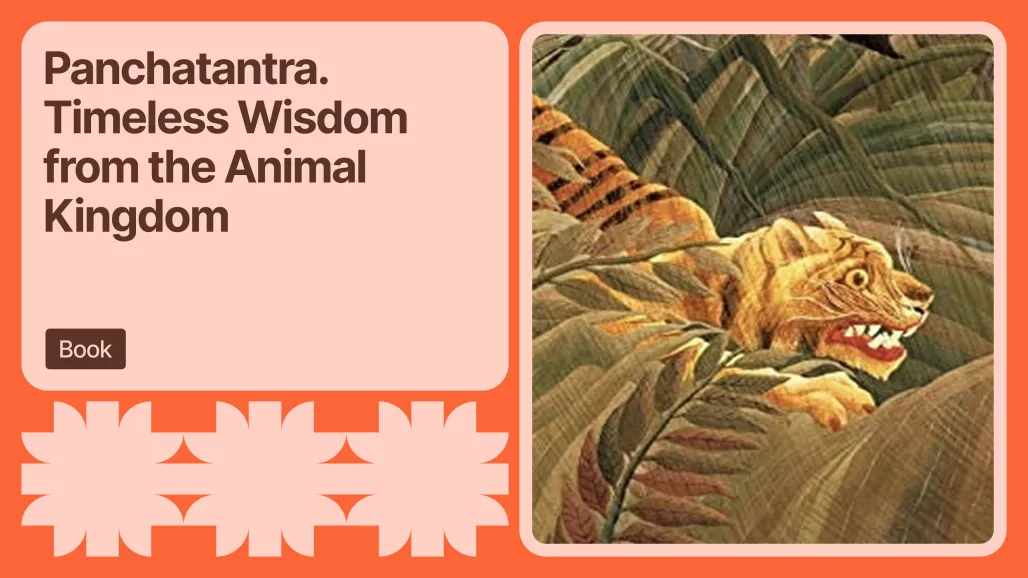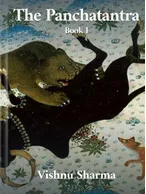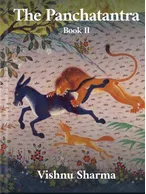Panchatantra. Timeless Wisdom from the Animal Kingdom

Discover the Panchatantra—ancient Indian fables full of wisdom, wit, and talking animals that teach timeless life lessons for all ages.
What Is the Panchatantra?
A Snapshot in History
Why Read the Panchatantra Today?
The Global Influence of the Panchatantra
Essential Stories to Start With
Other Ancient Fable Traditions
Final Thought
For over 2,000 years, the Panchatantra has entertained and educated readers across the world.
Originally written in Sanskrit, this ancient Indian collection of fables uses clever animals and vivid stories to teach practical life lessons about wisdom, friendship, leadership, and survival.
Whether you're a child hearing these tales for the first time or an adult rediscovering their meaning, the Panchatantra speaks to all ages—and all times.
What Is the Panchatantra?
The Panchatantra (which means “Five Treatises” or “Five Principles”) is a set of interconnected animal fables, often told as stories within stories.
It was created to teach young princes how to be wise and strategic rulers—but its teachings go far beyond politics.
Each story is short, engaging, and ends with a clear moral, making it both entertaining and educational.
A Snapshot in History
The Panchatantra was originally written in Sanskrit, likely around 200 BCE, and is traditionally attributed to a learned scholar named Vishnu Sharma. According to legend, it was composed as a teaching tool for the dull-minded princes of a powerful king, to help them learn the art of governance through stories instead of formal lessons.
This remarkable collection is widely recognized as one of the earliest examples of storytelling with a moral purpose, and its influence has spread across continents and cultures. Over the centuries, the Panchatantra has been translated into more than 50 languages. It found its way into Persian as Kalila wa Dimna, and from there into Arabic, Latin, and many European languages, becoming one of the most widely circulated collections of fables in world history.
Its blend of entertainment and instruction made it a model for countless later works—and its timeless relevance continues to speak to new generations.
Why Read the Panchatantra Today?
- ✅ Timeless wisdom: Lessons about trust, deceit, and clever thinking still apply today.
- ✅ Memorable characters: Talking lions, jackals, turtles, crows, and more.
- ✅ Layered storytelling: Stories within stories make each lesson richer and more memorable.
- ✅ Cultural insight: A window into ancient Indian philosophy, social values, and practical knowledge.
The Global Influence of the Panchatantra
The Panchatantra has had a profound impact on storytelling across the globe—far beyond its origins in ancient India. Its clever structure, moral lessons, and talking-animal fables have inspired literature from the Middle East to Europe, and even shaped modern children’s stories and moral tales.
One of the most direct influences is seen in the Arabic adaptation Kalila wa Dimna, translated in the 8th century by Ibn al-Muqaffaʿ. This version became immensely popular in the Islamic world and was later translated into Persian, Syriac, Hebrew, Greek, and Latin, spreading the Panchatantra's core messages across continents.
In medieval Europe, the stories found new life in books like The Fables of Bidpai and Directorium Humanae Vitae, both of which were based on the Panchatantra's structure. They shaped the development of Aesop-style fables, medieval moral tales, and even some parts of the Canterbury Tales.
Even in more recent times, the Panchatantra has influenced children’s literature, educational storytelling, and animation. Themes such as “brain over brawn,” “caution in friendship,” and “slow but steady wins the race” appear in modern stories, cartoons, and schoolbooks.
Writers and scholars continue to admire the Panchatantra for its blend of wit, realism, and layered meanings—proving that a good story, especially one with a moral, truly never goes out of style.
Essential Stories to Start With
Book 1 of the Panchatantra, titled Mitra-bheda (“The Separation of Friends”), explores how friendships can be disrupted by deceit, miscommunication, or poor decisions. The frame story revolves around a lion, a bull, and two cunning jackals, with various embedded tales that reflect similar themes. Here are some notable stories from this section:
This frame story is enriched by many smaller fables that reflect similar themes: the loss of trust, the danger of flattery, and the clever use of wit to survive.
Here are some of the most memorable stories from this volume:
The Monkey and the Wedge
A curious monkey sits on a half-split log and pulls out the wedge—only to hurt himself.

🧠 Moral: Don’t meddle in things you don’t understand.
The Jackal and the Drum
A jackal hears a loud sound and fears it might be dangerous. When he investigates, he finds only an empty drum.

🧠 Moral: Fear is often caused by ignorance or imagination.
The Crows and the Snake
A snake eats crow chicks until the clever crows come up with a smart plan for revenge.

🧠 Moral: Even the weak can overcome the strong with strategy.
Book 2 of the Panchatantra, titled Mitra-lābha (“The Gaining of Friends”), emphasizes the value of forming and maintaining friendships. The central narrative revolves around a crow, a mouse, a turtle, and a deer who become close friends and help each other overcome various challenges. Here are four notable stories from this section:
The Elephants and the Mice
A herd of elephants unknowingly tramples over a colony of mice. Later, when the elephants are trapped, the mice come to their rescue.

🧠 Moral: No creature is too small to help; kindness is always repaid.
The Weaver Who Wanted to Be King
A weaver dreams of becoming a king and devises a plan to achieve this. However, his ambitions lead to unforeseen consequences.

🧠 Moral: Overambition without understanding one's capabilities can lead to downfall.
These stories—filled with animals that speak, scheme, and reflect human behavior—are not just entertaining.
They’re tools for thinking, just as they were when first told to princes learning how to rule wisely.
📖 Start with Book 1 on WholeReader to enjoy the wisdom of the forest firsthand. All 5 volumes are available in Arthur William Ryder's translation.
Other Ancient Fable Traditions
While the Panchatantra is one of the oldest and most influential fable collections, it isn’t the only one.
Similar traditions grew in other cultures too, such as:
- Aesop’s Fables (Greece)
- Jataka Tales (Buddhist India)
- Kalila wa Dimna (Arabic adaptation of the Panchatantra)
- African folktales, such as Anansi the spider stories
Each of these traditions shares a love for animals, storytelling, and moral insight, but Panchatantra stands out for its interconnected plots, political strategy, and clever structure.
Final Thought
The Panchatantra is more than a book of stories—it’s a guide for life wrapped in the voices of talking animals and clever tricksters. Its lessons are as useful today as they were 2,000 years ago. You can read the Panchatantra for free in English at WholeReader, where narrated versions bring the stories and characters to life.
📖 Start reading—and let the wisdom of the forest guide you.

